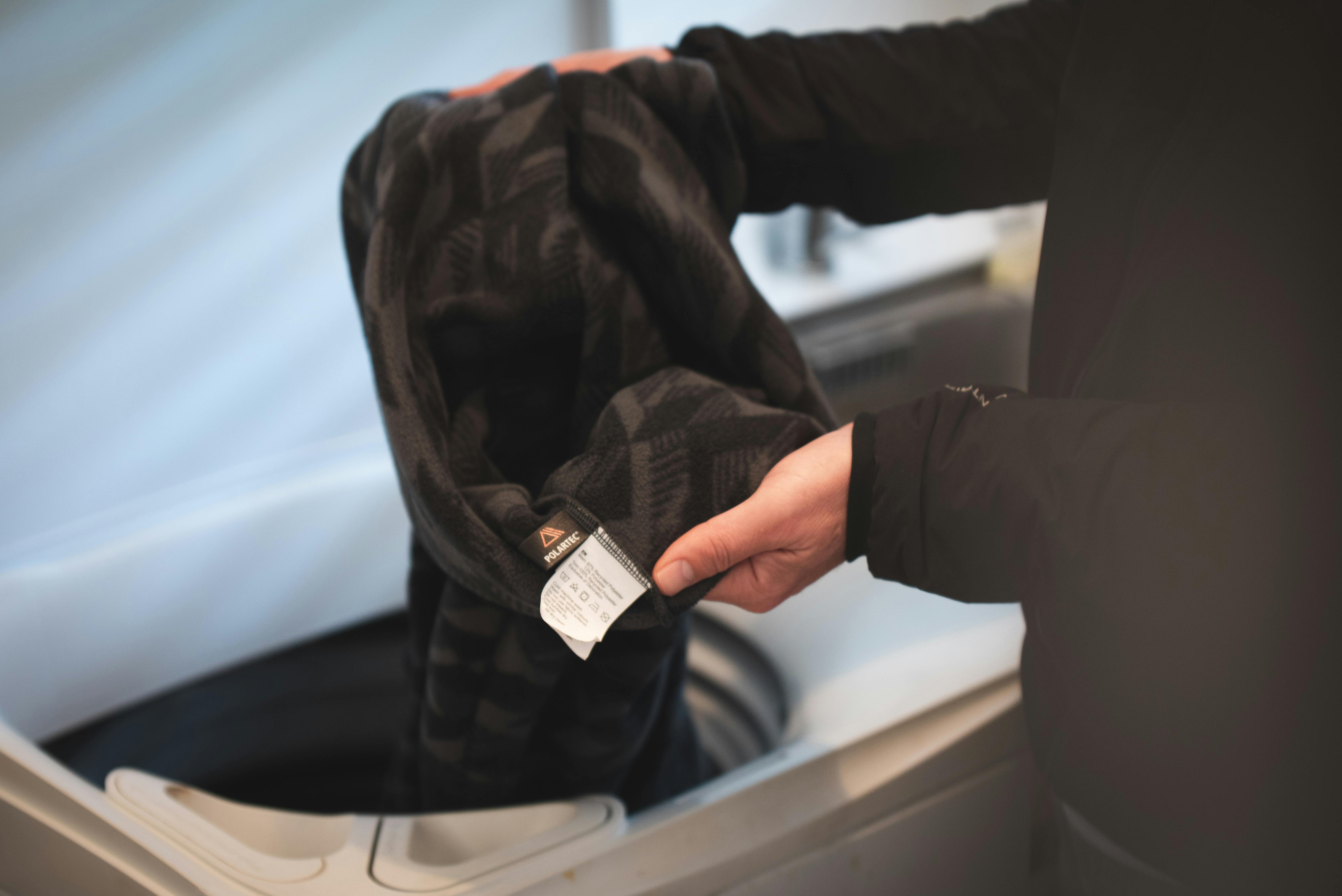The outdoor clothing industry is working hard to tackle synthetic microfibre pollution, and consumers can do their bit too.
An invisible dilemma is plaguing the outdoor apparel industry.
A growing body of research has shown that synthetic microfibres – found in a range of outdoor garments – are contributing to concerning levels of pollution.
The tiny fibres are shed by garments in the wash, making their way into waterways, and eventually to the ocean where they can be consumed by small organisms.
Researchers have estimated that a single load of laundry can release hundreds of thousands of microfibres, which are unlikely to be filtered on their wastewater journey to the ocean.
Being a recent revelation, the outdoor industry is playing catchup on the issue – and major companies in New Zealand and abroad are pledging to do their part to reduce microfibre pollution.
The synthetic wave revolutionised outdoor apparel, Macpac design manager Gavin Davidson says, with fabrics like Polarfleece, polyester and nylon coming to dominate shelves.
Before this, many trampers used wool as their go-to insulation, which prior to fine gauge blends was itchy and heavy – especially when wet.
The increase in accessible high-performance technical clothing vastly improved the warmth to weight ratio of garments and may have contributed to the decrease in hypothermia fatalities in New Zealand’s outdoors.
“As any tramper or climber knows, getting soaked through in bad weather could quite literally kill you, and having wet clothing next to your skin accelerates heat loss, and can quickly lead to hypothermia,” Davidson says.
“From that regard, synthetic materials have improved the outdoor experience immensely in terms of comfort and safety, but also in terms of availability – for better or worse, polyester outdoor gear is relatively cheap to make, putting high-quality gear in reach of a lot more people.”
Davidson says the industry is still grappling with how to deal with the issue of microfibre pollution.
“It’s something that sits very uncomfortably with us, to know that the product we make is contributing to a serious environmental problem,” he says. “It’s not fully clear to us – particularly in a New Zealand specific context – just how much micro waste is getting through our wastewater treatment plants, and what the origin of that waste is.”
Earth Sea Sky operations manager Jane Ellis says while the discovery of microfibre pollution is concerning for the industry, clothing demand is too high to stop using them altogether.
“We have passed the tipping point where the globe could grow enough natural fibre to clothe the world’s entire population – there are just too many people and we are fast running out of land and natural resources to grow things on,” she says.
“Using good quality synthetic fabrics from responsible manufacturers who can filter out most of the fibre migration before the consumer receives the garment has got to be a good start to the problem.”
Ellis says the argument should not be what materials you use, but how you use them.
Quality synthetic materials are more durable and efficient than most natural fibre alternatives, and therefore more likely to endure hard use.
Ellis says studies have shown the majority of microfibre shedding comes from fabric mills which have not been audited, and companies can make environmental changes with their choice of fabric supplier.
Designing garments from recycled PET plastic is another way to set sustainable benchmarks.
“Earth Sea Sky is but a minnow when it comes to the volume of clothing sold around the globe, but despite this, minnows can influence,” she says.
Davidson says consumer behaviour also has an impact and advises buying quality apparel, washing clothing only when necessary, and if possible using a front loading washing machine on a gentle cycle.
But the onus for change shouldn’t fall solely on the shoulders of consumers, and Davidson says the Macpac design team is working towards sustainable alternatives.
“Where it makes sense, we are using biodegradable options,” he says. “Last season we switched from using a merino and polyester blend in our travel merino garments to using a merino Tencel blend. Tencel has good strength and a luxury hand feel, but it is biodegradable.”
Supplier companies Primaloft and Polartec are also engineering biodegradable clothing materials for Macpac gear.
The company has also started stocking the Guppy Friend – a mesh wash bag designed by STOP! Micro Waste, a German NGO, that reduces garment shedding in the wash and filters microfibres before they get into the waterways.
It’s the first washing bag designed to reduce microfibre pollution – a problem Guppy Friend co-owner Alexander Nolte says is bigger than most people realise.
“Microfibres are everywhere – in the Arctic ice, the remotest parts of the deep sea, in the dust in our homes. The latest studies show they are also found in mountain areas far away from any civilisation,” he says.
The tiny particles have been discovered in foods, such as honey, water, salt and beer, and are ingested often by humans and animals, whether by respiration, eating or drinking.
“The consequences for our health are not fully examined, but we don’t need a longtime study to understand that toxic plastic particles in our bodies certainly are not a good thing,” Nolte says.
Independent researchers have found Guppy Friend prevents fibres from breaking down by 86 per cent on average, and it filters up to 99 per cent of fibres from wastewater.
Buying less, but better is Nolte’s top tip, and he advises checking the label and avoiding synthetics where possible.
“Ask your local store and favourite brand for microfibre-free alternatives,” he says. “They need to know that you care.”








